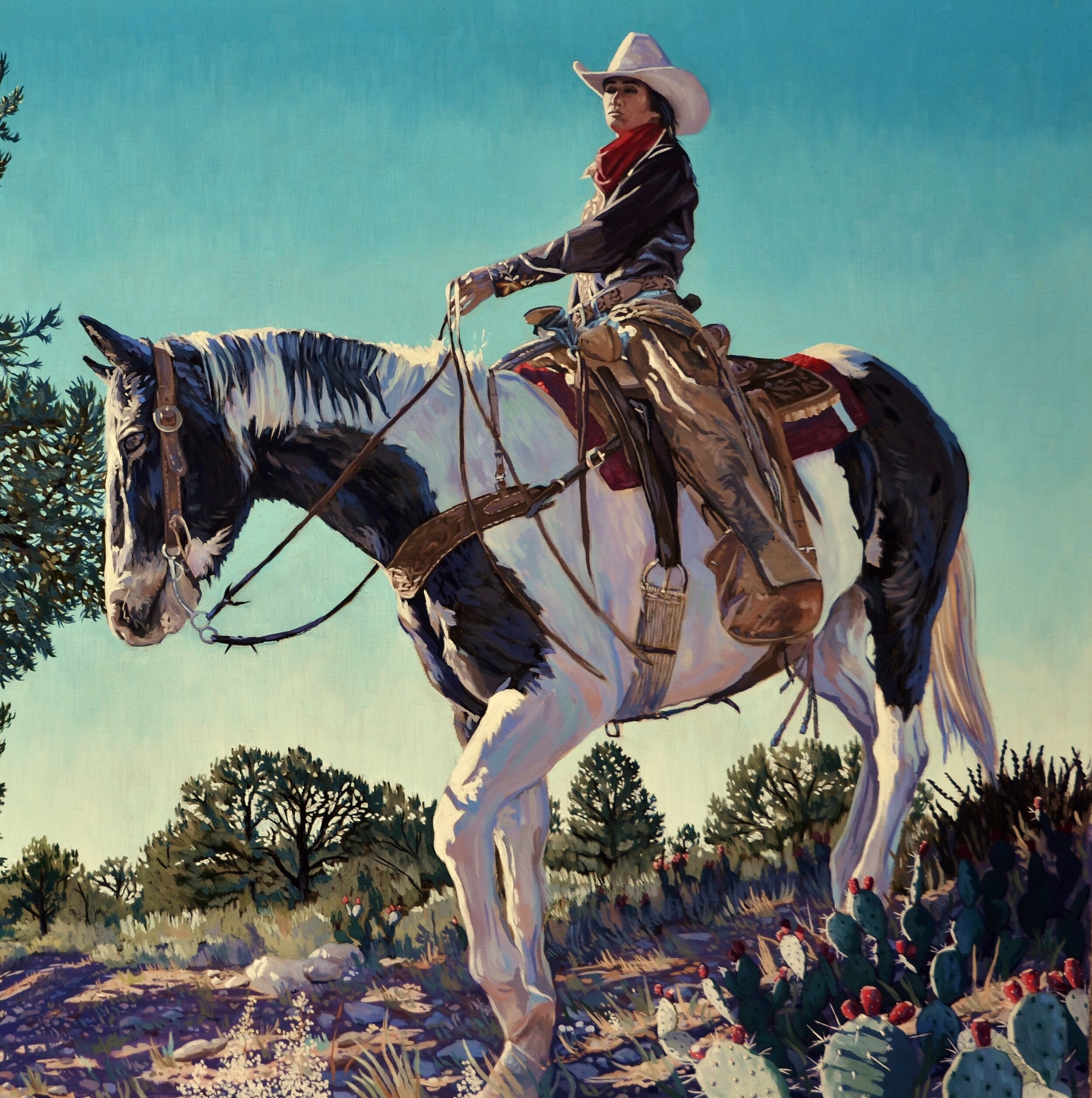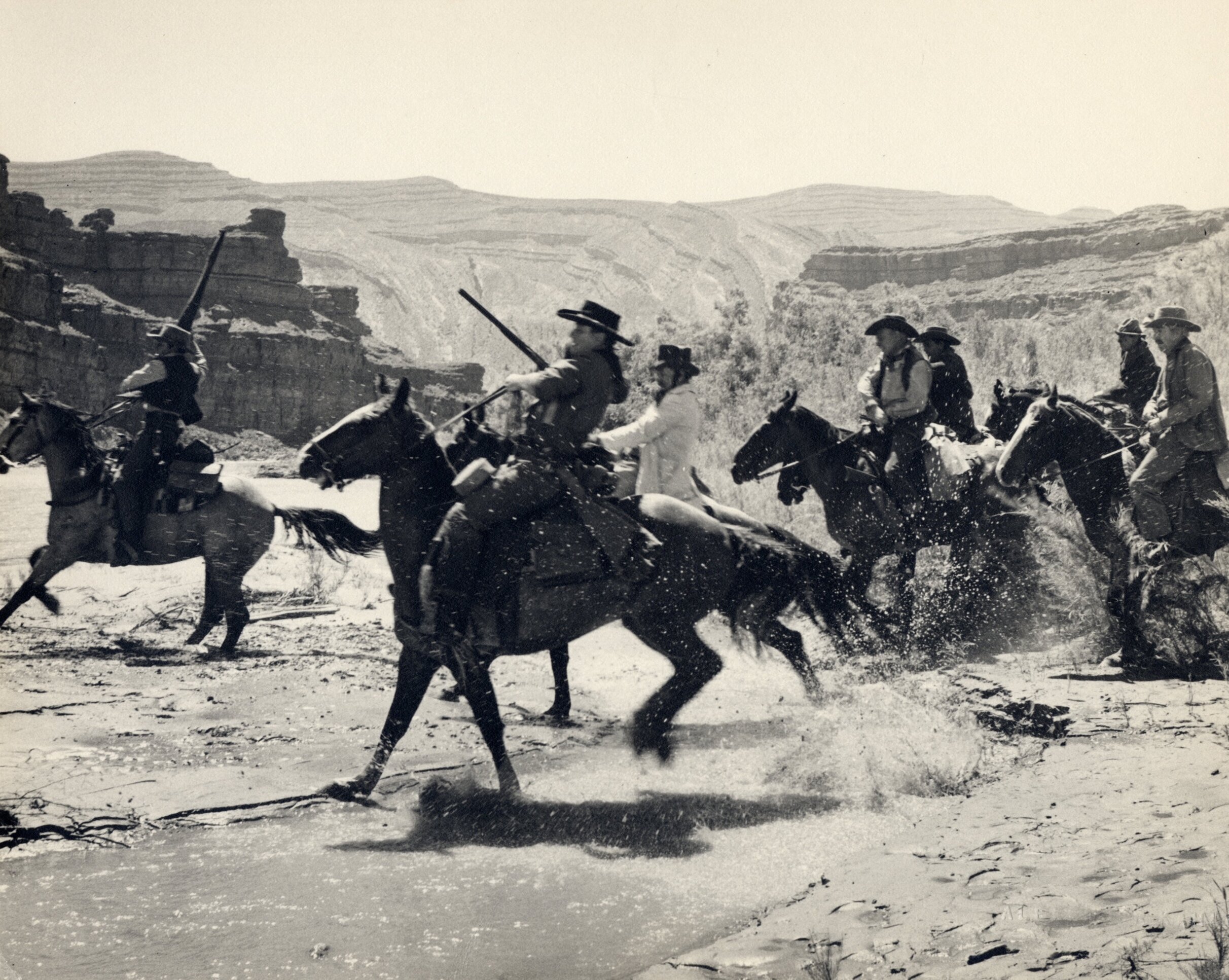To create his vibrant compositions of Western culture, artist Jason Lohmeier looks no further than a familiar canvas—and a larger-than-life figure.
Written by Jenn Thornton
Decades after his death, John Wayne is still an inspiring figure to many—Jason Lohmeier, for one. The representational painter is quite prone to pop in a Wayne classic while composing a scene straight out of his native Southwest. In his studio, The Searchers, El Dorado and War Wagon are among the films in heavy rotation. The characters that Wayne played, Lohmeier notes, “have become family.”
Raised in the shadow of the Rincons and Catalinas in Eastern Tucson, Arizona, the landscape and his love of history, along with a few Wayne favorites, fueled Lohmeier’s “passion for everything Western,” from mountains to ghost towns. “Here I am this kid,” he remembers, “and I’m watching all these John Wayne movies filmed in southern Arizona and then hiking around and exploring old mining shacks, adobe walls, and forts.” All of which is to say: What else would Lohmeier paint but exactly what he knows?
But until a few years ago, it wasn’t clear that Lohmeier would paint anything at all. He had always drawn, but beyond what he calls a “terrible” first painting in high school and a few art classes in college, Lohmeier was never trained in the art of Realism. What’s more, “There was no YouTube, so unless you knew someone or paid someone for lessons, it was more difficult to teach yourself,” says Lohmeier, who experimented with making didgeridoos from Agave Stalks and pinch pots from southern Arizona clay, but only focused on Realism after these few choice words from fellow artist Curt Mattson: pick a medium, stick with it, and build up a body of work.
That advice and, later, Instagram, proved game-changers for Lohmeier. The social-media platform opened up a whole world of Western art to which the painter has since contributed his own canon of cowboys, soldiers, Native Americans and a landscape as familiar to him as his own shadow. “You have everything in Arizona, from lowland creosote and prickly pear to Pinion sage, Alpine meadows and year-round streams up in the White Mountains,” he says. This backdrop naturally gives way to experiences he also depicts via works like “Chubasco Furioso,” his rendering of a furious summer rainstorm from which a cowboy seeks shelter. “My life has been saved many a time by crawling to high ground and riding out a storm in a cave, or making it back to my truck just in time before torrential rain and lighting struck,” confesses Lohmeier.
As a painter Lohmeier faces challenges of a different variety. “I’m still young in painter years,” he says, sensing the long road ahead. But this time, he knows the road he’s on. No more painting family members and pets, or designing logos, tattoos and T-shirts, endeavors that he says made others happy but always felt like work. “When I paint the West,” he says, it’s the opposite. “I love it. I can’t stop.” While visibility for his work increases, there’s no feel that he will either.
While Lohmeier looks to artists Charlie Russell, Frederick Remington, N.C Wyeth, Norman Rockwell and John Singer Sargent for artistic inspiration, he has a rock and a constant in Wayne. “I really do want to paint [John Wayne’s character in The Searchers] Ethan Edwards, but I don’t want to just copy a photo off the Internet; anyone can do that. I want to create a unique composition, so it will happen.”
“I really do want to paint [John Wayne’s character in The Searchers] Ethan Edwards, but I don’t want to just copy a photo off the Internet; anyone can do that. I want to create a unique composition, so it will happen.”






